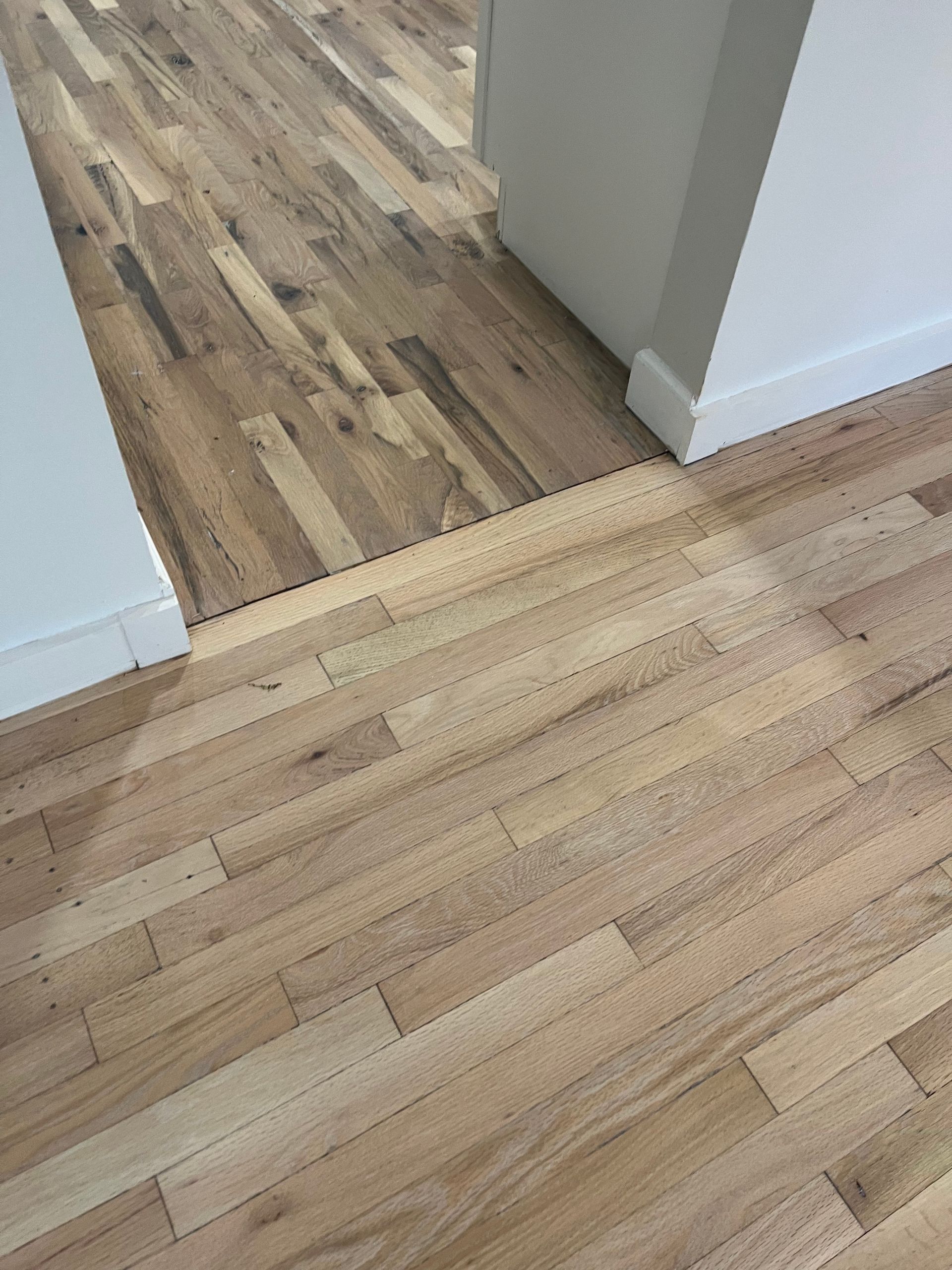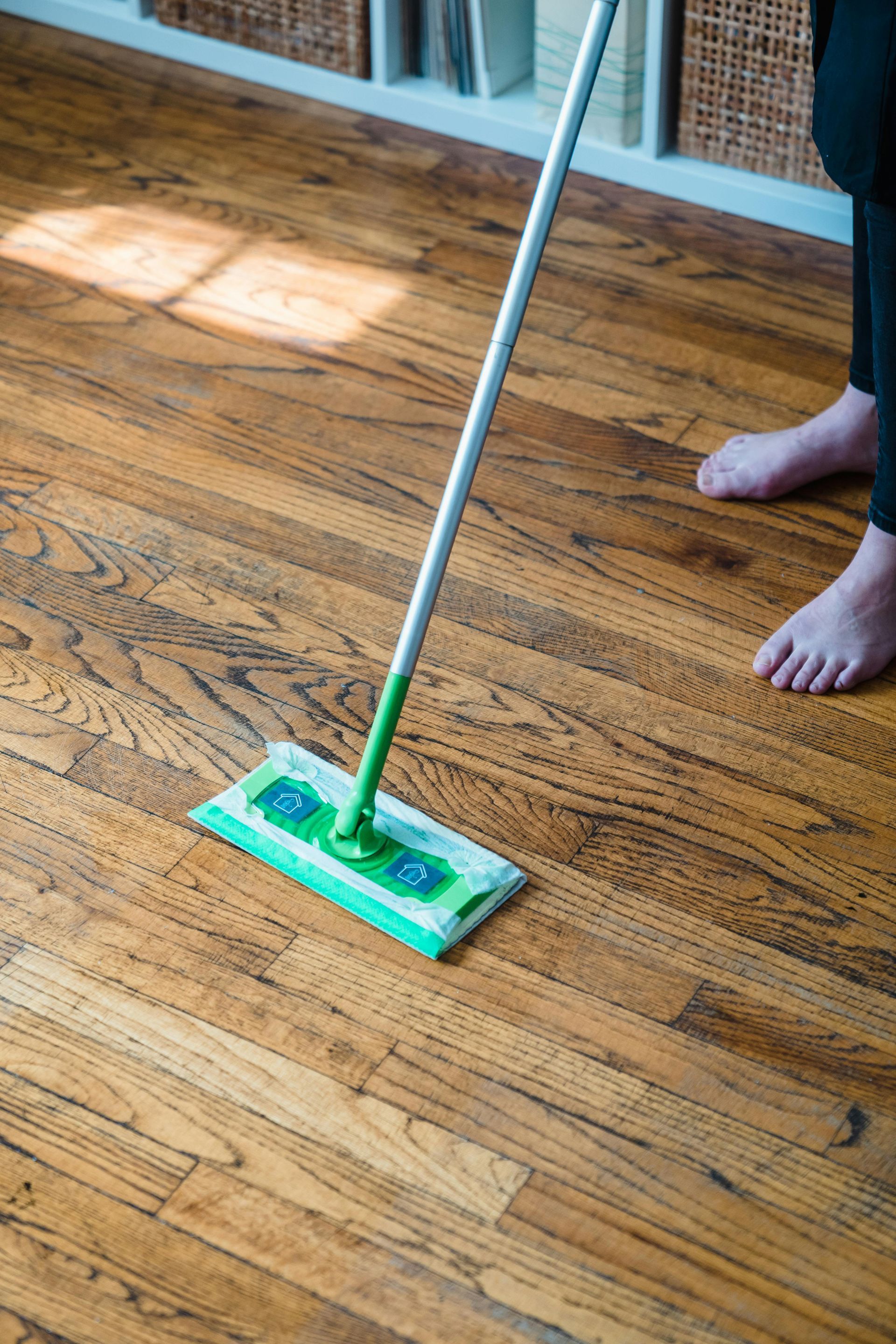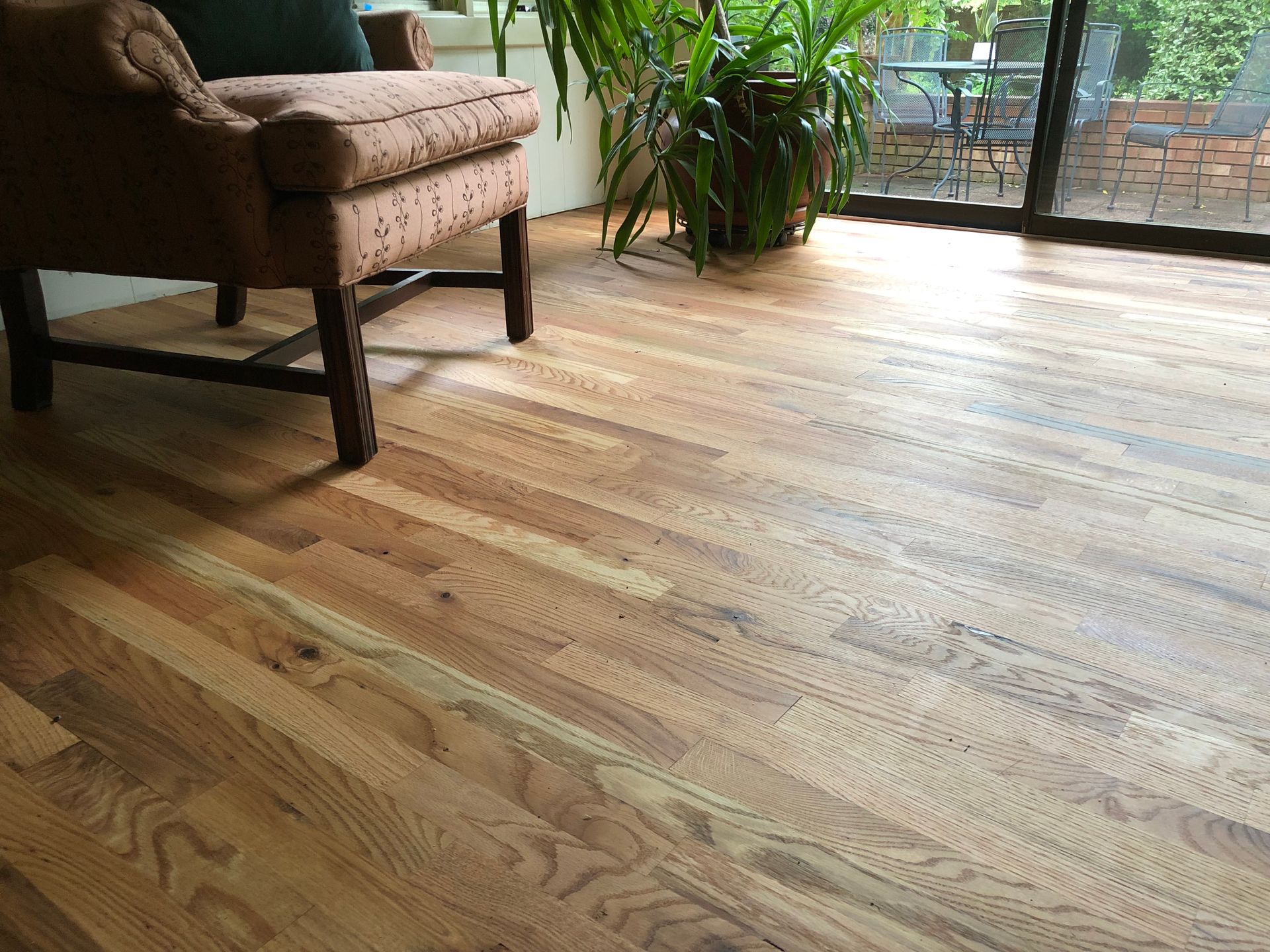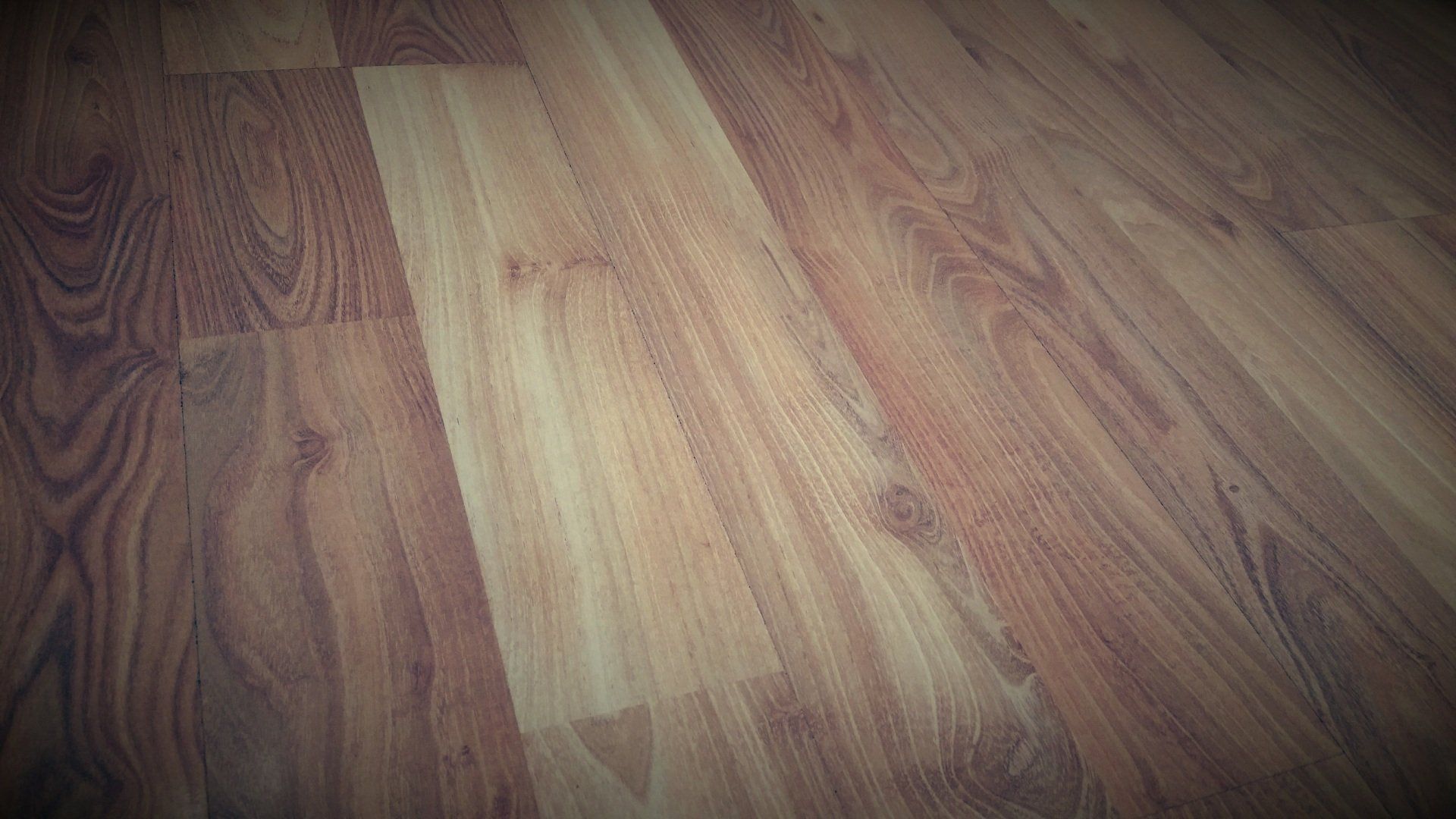Mastering the Art of Blending: How to Match Different Wood Species in Your Home Flooring
Matching two different species of wood flooring...

Matching two different species of wood flooring in a home requires a thoughtful approach that blends aesthetic considerations with technical expertise. Homeowners often face this challenge when renovating or expanding their space and discover that the existing floors are a different species from the new wood being installed. Successfully integrating two species of wood flooring can elevate the home's overall design and maintain its cohesion. This process often involves sand and refinish techniques, precise color matching, and the use of a natural oil finish to create a seamless appearance.
The first step in matching two different wood species is understanding the characteristics of each species. Wood species vary in grain pattern, hardness, and natural color tone. For example, oak often has a pronounced grain and a warm tone, while maple features a subtler grain and a lighter hue. The distinct visual differences between species must be carefully evaluated to determine how to harmonize them effectively. Additionally, the hardness of the wood can affect how it wears over time, which is an essential factor for areas with high foot traffic.
After assessing the characteristics of the wood, the next step is to decide on the layout. The transition between two species should feel intentional and cohesive, rather than abrupt or disjointed. In open-concept spaces, it is often best to avoid sharp transitions and instead aim for gradual blending or the use of a design element like a border or medallion. A border crafted from one species of wood can create a natural frame around the second species, offering a clear but elegant division. Alternatively, an artistic medallion or inlay can serve as a centerpiece that unifies the two materials.
Achieving a cohesive look often depends on the sanding and refinishing process. Sanding levels the surface and prepares the wood for finishing, ensuring that both species will absorb the finish uniformly. The refinishing stage is where much of the magic happens. A skilled professional can adjust the stain and finish to minimize the visual differences between the two types of wood. For example, a darker stain can help unify lighter maple with darker walnut, or a natural oil finish can highlight the grain patterns in both species, creating a balanced and harmonious effect.
Color matching is a critical component of this process. Even if the two species differ in their natural coloration, the right stain can bridge the gap. This requires careful testing and a deep understanding of how different woods react to stains. Test stains should be applied to samples of each species to observe how they take the color and how their unique grain patterns interact with it. The goal is to find a shade that complements both woods while creating a consistent appearance.
Natural oil finishes are particularly effective for projects involving multiple wood species. Unlike polyurethane or other surface finishes, natural oil penetrates the wood, enhancing its natural beauty while providing protection. It emphasizes the unique textures and grains of each species, allowing them to shine individually while contributing to the overall harmony of the design. Additionally, natural oil finishes are easy to maintain and can be refreshed without extensive sanding, making them a practical choice for long-term care.
Another factor to consider is lighting. The way light interacts with the floor can either accentuate or downplay the differences between the two species. Natural light may enhance subtle tonal variations, while artificial lighting can be adjusted to create a more uniform look. Consulting with a professional lighting designer can help ensure the space is lit in a way that highlights the beauty of both wood species without drawing attention to their differences.
For homes with existing wood floors, sanding and refinishing the older flooring can help integrate it with the new material. Over time, wood can fade or develop a patina, which may clash with the freshly installed planks. By sanding the old floor and applying a new finish, you can create a unified appearance that makes the transition between the two species virtually undetectable. This approach also extends the life of the existing floor, adding value to the home.
It is also essential to address practical considerations like durability and maintenance. If one species is significantly softer than the other, it may wear differently over time, creating uneven surfaces or noticeable discrepancies in appearance. Choosing the right finish can mitigate some of these issues. For example, a hardwearing natural oil finish can provide additional protection to softer woods, helping them resist dents and scratches. Regular maintenance, such as reapplying the oil finish and addressing minor damage promptly, can also preserve the floor's cohesive look.
When integrating two species of wood flooring, it is important to work with experienced professionals who understand the nuances of wood and finishes. A skilled flooring contractor will have the expertise to sand and refinish the floors properly, ensuring a smooth and level surface. They will also have an eye for detail when it comes to color matching and can provide valuable advice on achieving the desired look. Additionally, professionals can recommend the best products, such as high-quality natural oil finishes, that will enhance the floor's beauty and durability.
Homeowners can also draw inspiration from design trends and examples of successful projects. Modern interiors often embrace the natural variations in wood, using them as a design feature rather than attempting to mask them entirely. In contrast, traditional designs may favor a more uniform appearance, relying on precise color matching and consistent finishes to achieve a classic look. Understanding your style preferences and how they align with your home's architecture can guide the decision-making process.
In cases where the difference between species is too stark to bridge with finishes alone, creative design solutions can come into play. For example, creating a deliberate contrast between the two woods can turn a potential mismatch into a striking design feature. This approach works particularly well in contemporary or eclectic spaces, where bold design choices are celebrated. By incorporating other elements, such as furniture, rugs, or wall colors that complement both wood species, you can create a cohesive look even when the woods themselves are distinct.
Environmental factors should also be considered. Wood reacts to changes in temperature and humidity, and different species may expand and contract at different rates. This can lead to gaps or buckling if the two types of wood are installed without proper acclimation. Allowing the wood to acclimate to the environment before installation and using appropriate underlayment materials can help mitigate these issues. Maintaining consistent indoor humidity levels is also crucial for the longevity of the floor.
Ultimately, matching two different species of wood flooring is an art and a science. It requires a keen eye for design, a deep understanding of wood properties, and meticulous attention to detail. By leveraging techniques like sanding and refinishing, achieving precise color matching, and applying a natural oil finish, homeowners can create a floor that feels cohesive and intentional. Whether the goal is to blend the woods seamlessly or celebrate their differences, the result should enhance the beauty and functionality of the space while reflecting the homeowner's unique style.









